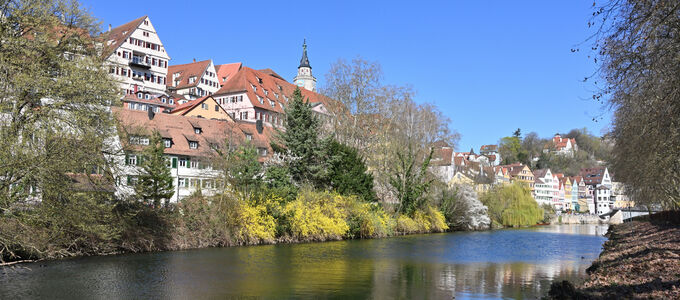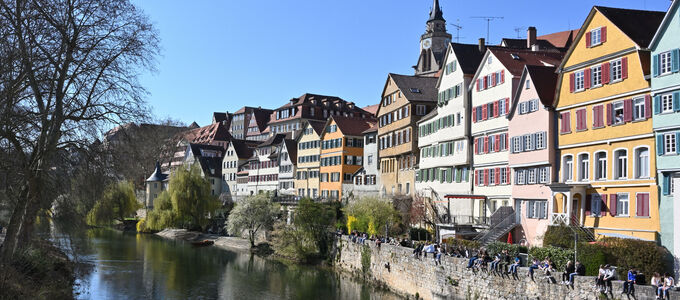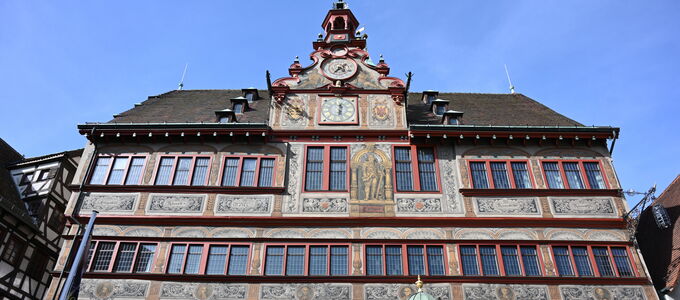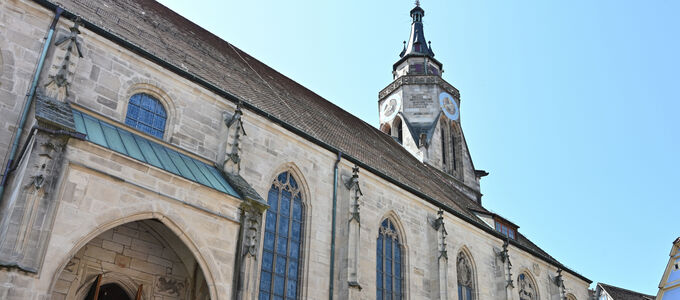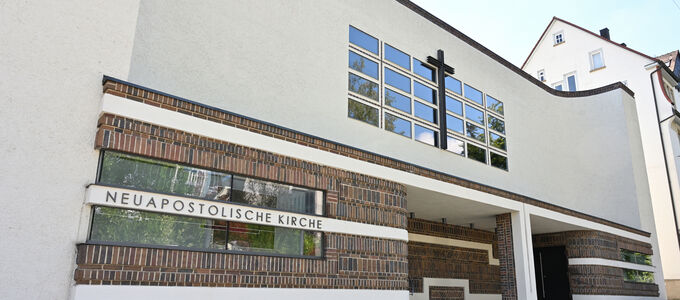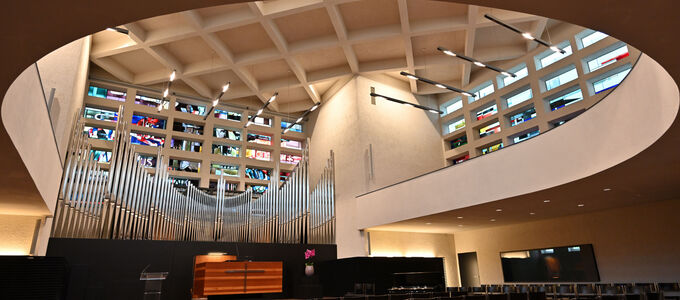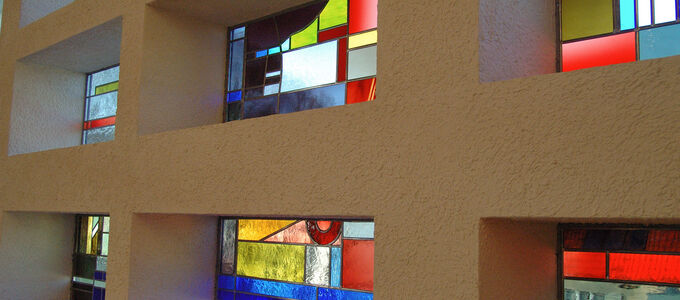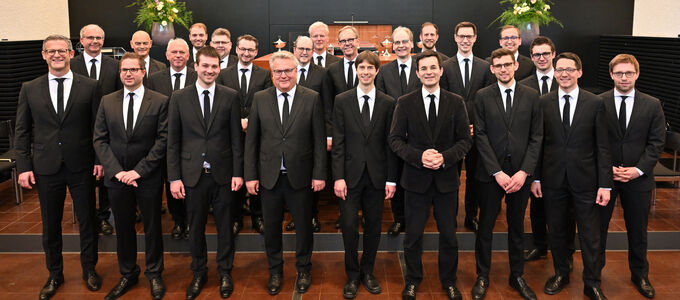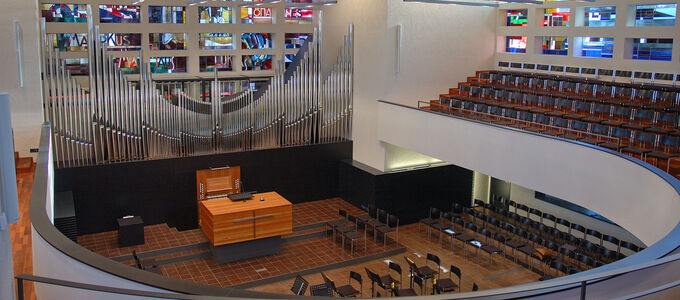
The Chief Apostle will hold the end-of-year service in a Bauhaus-style church building. Manfred Bayer, affectionately known as Manne, is a man who really knows the church, the congregation, and the city. Today the urban guide shows off his favourite city: Tübingen.
“Everything smells of wood, and even though everything was cleaned beforehand, you can see wood chips everywhere. Some random boards serve as benches, and newspapers are laid out on top of them so that the attendees can avoid getting splinters.” Manne Bayer, a retired District Evangelist, can tell you all about the first New Apostolic service that ever took place in Tübingen as if he had been there himself.
Manne Bayer has had a fascination with stories since he was a little boy. “I grew up in the middle of the old town from the age of ten,” says the now 81-year-old. Throughout his working life, he would show friends around the city as a hobby. When it was time to retire, it was clear to him, “I’m not just going to sit around collecting stamps.” And so it was that the pensioner gave his first official tour of the city on 7 June 2008, just a few days after he had also retired from ministry. “A seamless transition,” he laughs.
History you can touch
His love for the city really comes across to the tourists. He shows them Hohentübingen Castle, from where visitors can enjoy a wonderful view of the Swabian Jura. Then he leads them to the Protestant Collegiate church and the town hall, where visitors can read an inscription that has existed since 1435: “Touch it: this is the same house made from the same beams that were cut 500 years ago in the Black Forest and transported to Tübingen by raft on the Neckar River.”
One of the oldest German universities stands in Tübingen. “Many personalities studied and taught at this university: Johannes Kepler, Philipp Melanchthon, and Friedrich Hölderlin, to name just a few. All people from Tübingen who made a name for themselves,” he says with pride. Some names—for example, Albert Knapp or Friedrich Silcher—can even be found in the German-language hymnal of the New Apostolic Church.
A young old city
“We are a young old city. This feeling weaves its way through all the streets and alleyways, and through life itself.” Today there are around 91,000 local residents and about 28,000 students a semester. This reality not only defines the city, but also the congregation, “They are well integrated. In terms of their faith, some of these students in Tübingen are reactivated simply by the pull of the other students. Here they seem to gain new momentum.” For example, when the church smells of spices for days because the students have had a cook-in.
“The preaching is current and in line with the needs of the present. All of the listeners feel it is specifically tailored to them,” says Manne. The young choir leader is happy to have the choir sing modern hymns, but he doesn’t neglect the older hymns either.
“The nice thing about Tübingen is that the historically preserved elements and the modern world complement one another wonderfully,” says Manne Bayer. When a house is renovated or newly constructed in the old town, it is always on the condition that its exterior adapt to the surroundings. “You can do anything you want inside: you can build a slide or an elevator.” That’s what makes the city so cosy, so homey, and so attractive. “Tübingen is not a museum—everything is alive.”
On the trail of a pioneer
Manne is also happy to walk nac.today readers along the route that Jakob Lamparter took through Tübingen when he was no more than a young Deacon who had been sent to the city. “He was a young painter and had originally wanted to go to Switzerland and see about work possibilities there,” he says. But the District Elder said, “No, I need you to go to Tübingen and start a congregation there.”
It was on Easter 1908 that the young man left the Tübingen train station and walked through the city, which was completely foreign to him. “When he had just about reached the end of the street, he summoned up his courage and rang the bell somewhere.” So it was that he managed to find a room, a job, and soon thereafter some brothers and sisters too. The congregation was established in November 1908, and Jakob Lamparter was appointed its rector.
A good 20 years later, the congregation, which had by then grown considerably, received a building of its own at Bruns Street 24. The Bauhaus-style structure caused quite a stir in the architectural world at the time. “And our Chief Apostle will be visiting this wonderful jewel of a building on New Year’s Eve,” says Manne happily.






